In this video, we put two of the most popular studio strobes to the test, comparing their features, functionality, and overall performance.
Looking for a new strobe for your studio? Let's compare the Profoto B1X to the Westcott FJ400.
All right, so you have a photography studio, and you need new lights. You’re looking to invest in gear, and there are all sorts of lighting equipment out there. So which is right for you? We’ve got the 800lb gorilla of our industry, Profoto, no doubt. And we’ve got a somewhat newcomer to the world of strobes, US-based company, Westcott. Let’s just start getting to it on some of the comparisons.
Now, of course, Profoto B1x is not necessarily a new light. It’s been on the market for a long time, but it is one of their most powerful battery-operated lights, and that’s one of the things I’m looking at here. I want portability. So you’re going to be looking for something that’s battery-powered, something that you can have with you on location, whether it’s on the beach, whether it’s at an Airbnb that you’re renting, or just in the field in general.
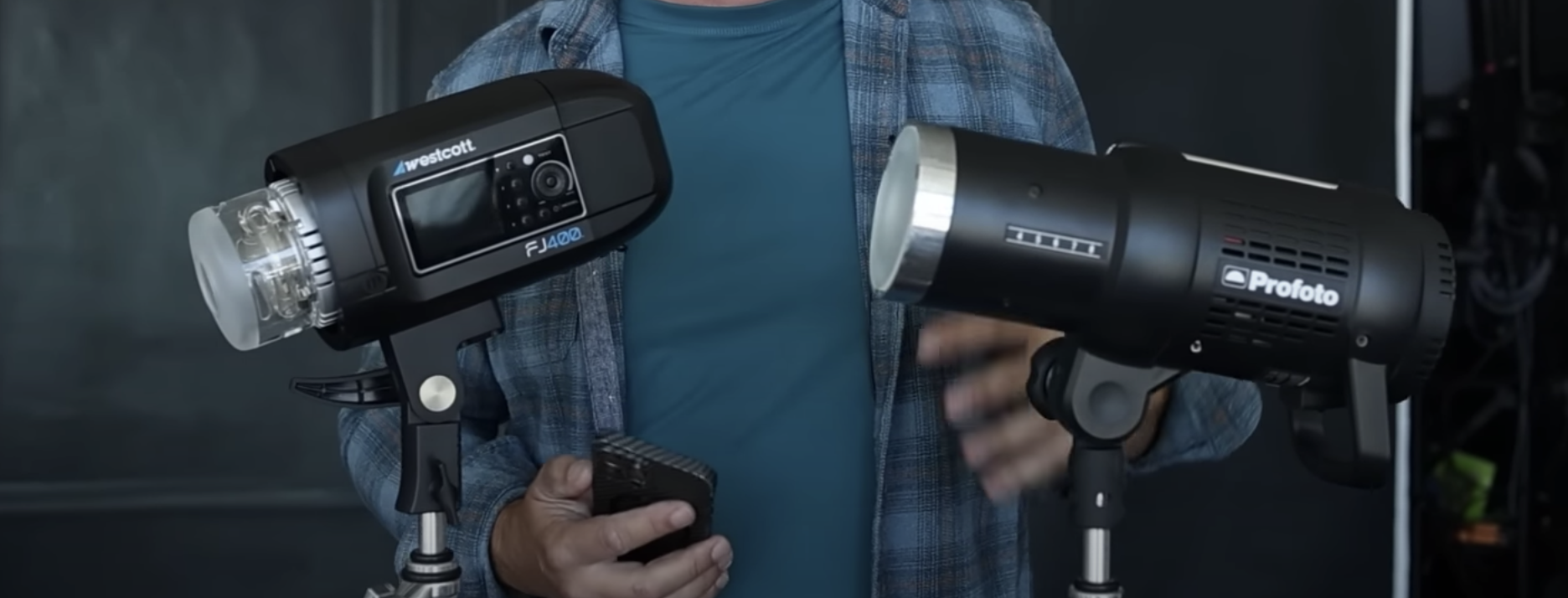
If you’re in studio, of course you can get something that’s AC-powered, but I have to be honest with you, once batteries came out in an affordable way for these strobes, I have avoided plugging in a light in my studio at all costs. Those of you who have been in photography for a long time (maybe if you’re new, this isn’t something you’ve ever dealt with), as you’re moving your lights you’re tripping over those cords, that can be quite cumbersome.
So right out of the gate, these are two lights that I personally use. So I’m not just doing an unboxing video, these are my strobes. They weren’t sent to me for a review. I’m just giving you feedback on where we’re at today because things have changed over the years.
The Profoto B1x, if I had to guess, I’m going off the top of my head, but I want to say these strobes have been out for a five- to seven-year window. Again, just going off the top of my head, whereas the FJ 400 has only been out a few years. So will Profoto update this beast of a light sometime in the future with a thousand-watt unit? That’d be interesting for sure, but right now, this is what we’re going to compare here.
Raw Power
So if we compare just raw power, Profoto wins, right? Ding ding, thumbs up, 500 watts vs 400 watts. Profoto’s going to take the cake. It’s one of the most powerful battery-operated strobes that are out there on the market, okay? And you pay the price with it with a huge battery brick there.
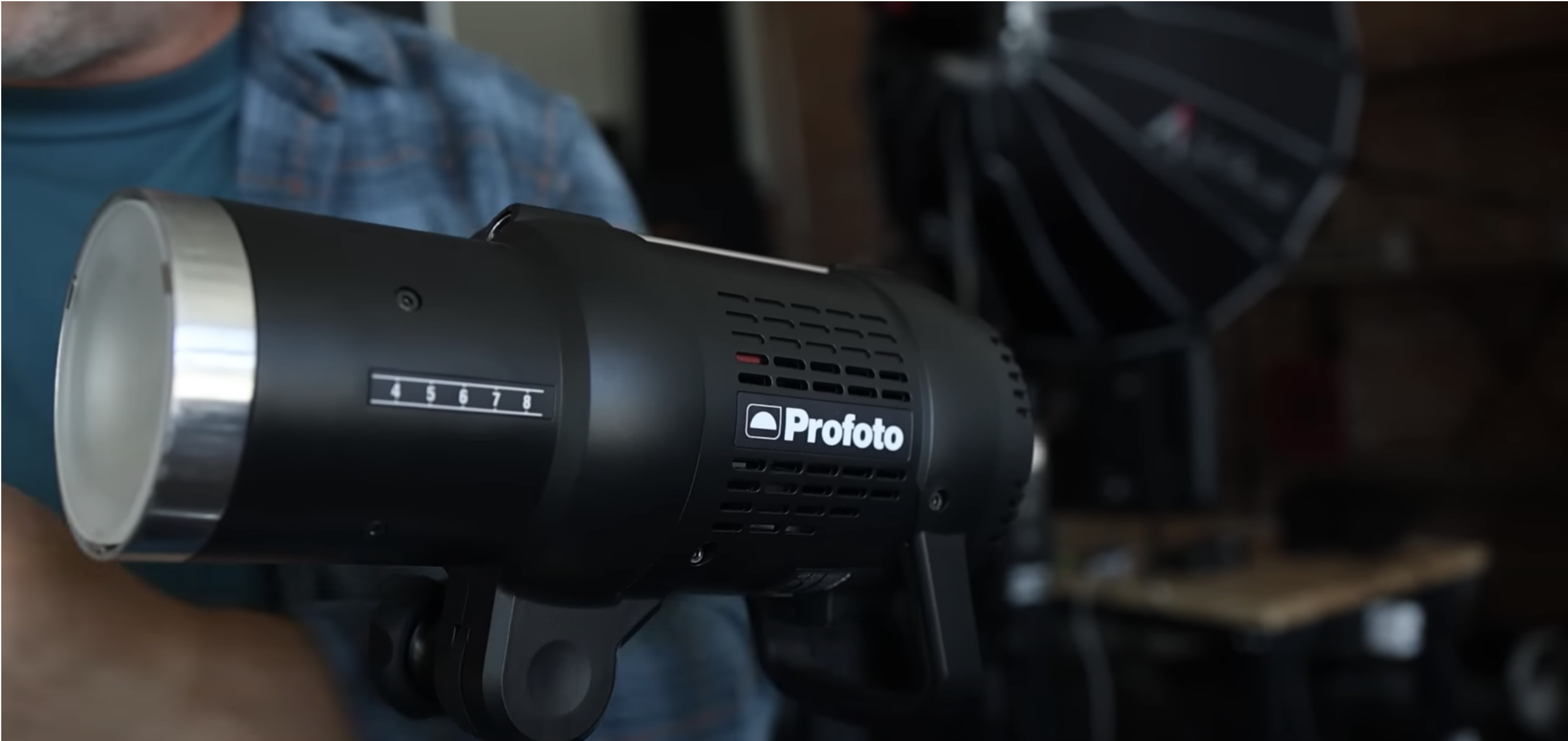
Now, nothing to do with the review. Something I would tell you that I do, anytime I buy one of these strobes with a battery, I always buy an extra. So, if I’ve got one strobe, I’ve got two batteries, if I’ve got two strobes, I’ve got four batteries. I want to be able to switch out in the field and not have to run frantically to change that.
Cost
For the overall cost, the Profoto currently on B&H is $2,895 for a single unit, whereas the Westcott FJ400 is $599 for a single unit. Now, of course, the number right there is just staggering, right? You can get multiple lights, in fact, you can get a 2-Light Kit from Westcott. So two FJ400 Strobes with a trigger for $1,379, which is a significant difference between the price points. So these are decisions you have to make, right? It’s not about bashing one light over another. Because quality matters, durability matters, and we’re going to talk about some of those other things next.
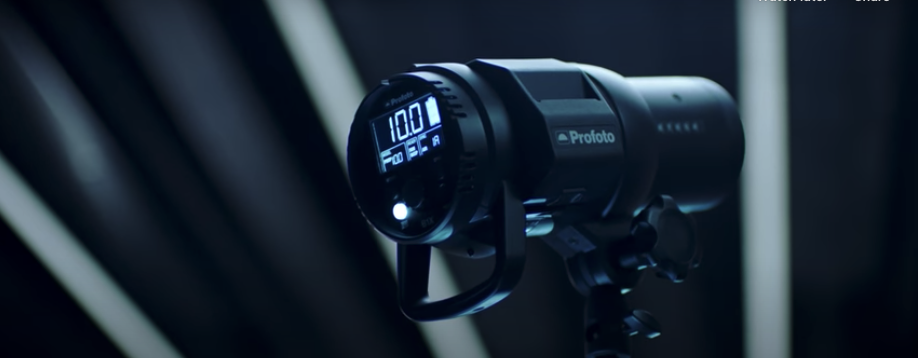
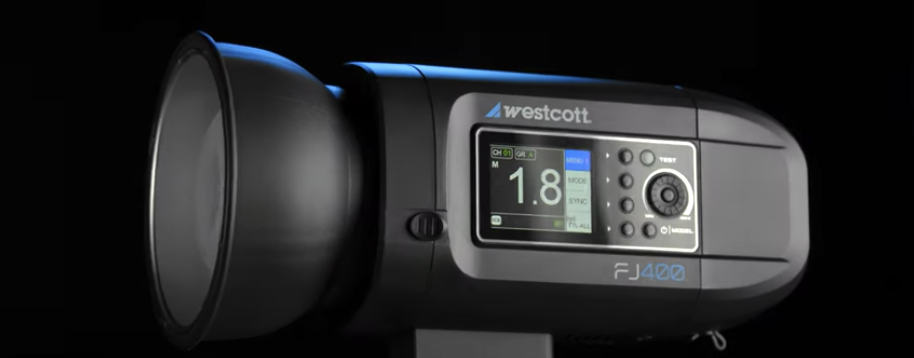
But here are the numbers I thought would be interesting in comparing, because I always see other unboxing or comparison videos, but you never really get down to the raw numbers. So it’s easy to look at the numbers and be like, “Oh my gosh, 20-something hundred dollars compared to $499,” but check out this number. Overall cost per watt. The Profoto B1X has 500 watts of power and the Westcott FJ400 has 400 watts of power. So you could make the argument that, “Well, this is 500 watts and this is 400 watts. It’s not comparable.” True, but it’s like when you go to the grocery store and you buy a box of tissues that has 500 tissues in it and a box of tissues that has 400 tissues in it, is the one more expensive than the other? What’s your cost per tissue?
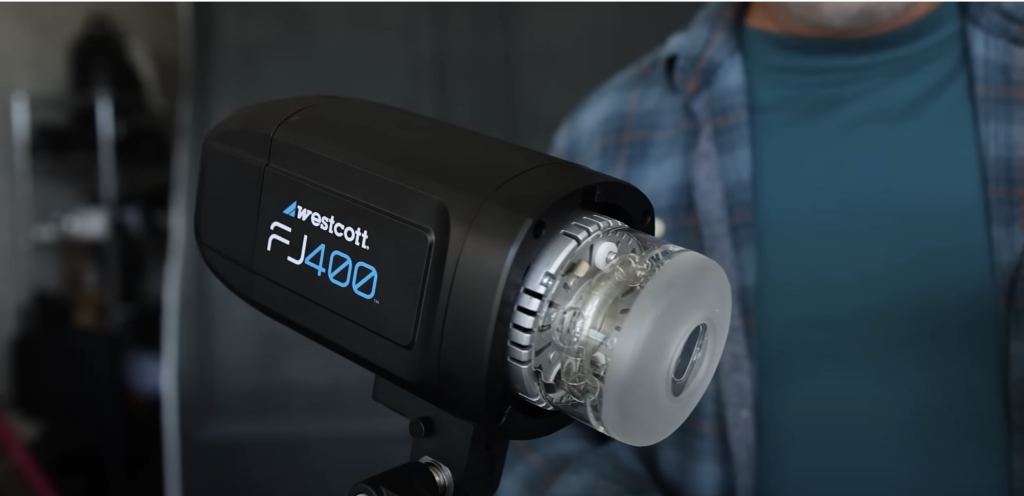
So, what is your cost per watt? What are you paying for watt of power? Well, the Profoto B1X is $5.79 per watt of power compared to the Westcott FJ400, which is a $1.49 per watt of power. I mean, that’s something to really consider. And the numbers? 289% more. So you are paying 289% more per watt of power on the Profoto unit than you are on the Westcott. Is it worth it? It’s hard for me to say it is because the quality of light on this FJ400 is just as good. I don’t care what anybody says. The results speak for themselves. And I’ve got a portfolio of images using the FJ400 for the last year that showcases I’ve had no issues with this, but let’s keep going. So overall cost: Check mark, the win goes to Westcott FJ400.
Recycle Time
Profoto will recycle at 0.1 second to 1.0 full second, whereas Westcott will recycle at a 0.5 second to 0.9 seconds. So the Westcott unit is recycling faster. Now, Westcott for the win, right? And that’s at comparable power, its lowest power setting to its highest power setting, meaning at full power, B1X is going to recycle at 1.0 second, FJ400 at 0.9 seconds. Is it a big enough difference? It’s pretty damn close, but still, win goes to Westcott on that.
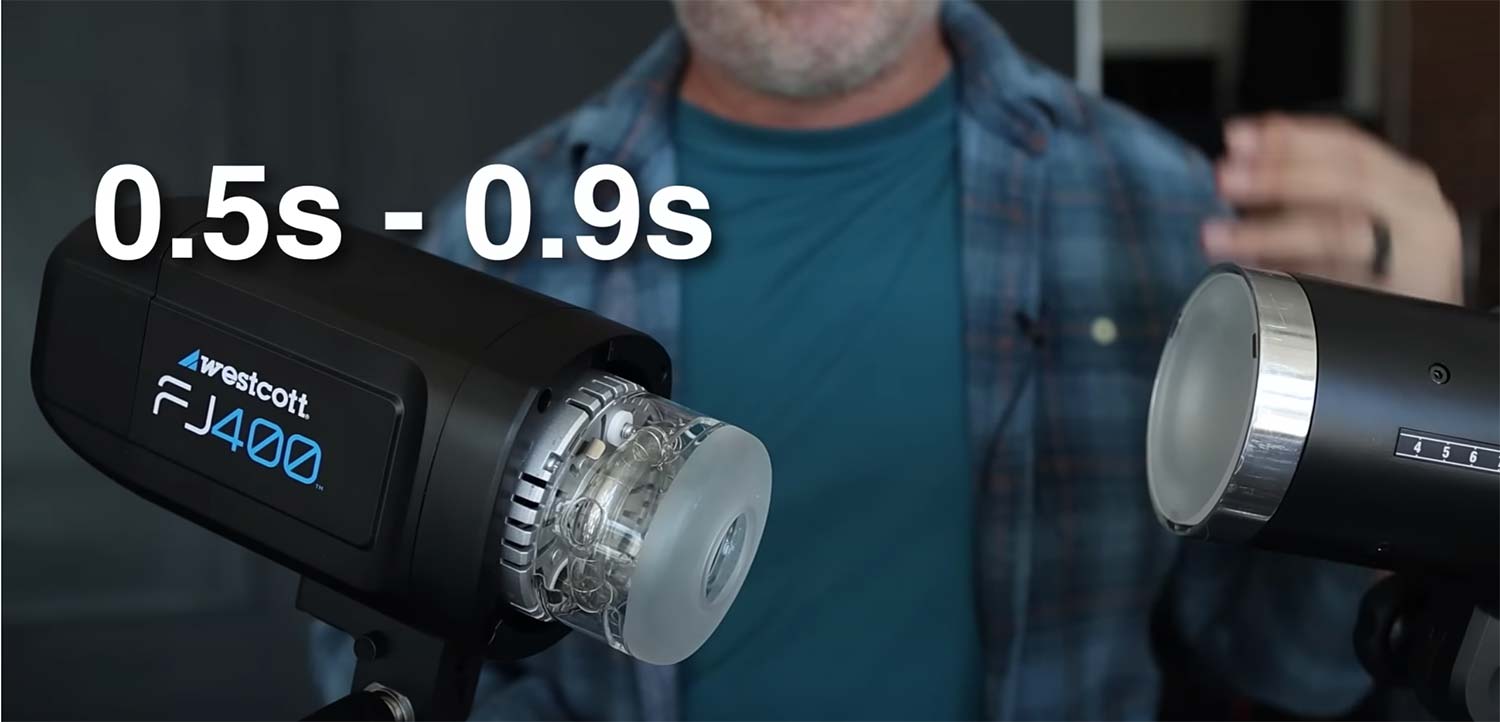
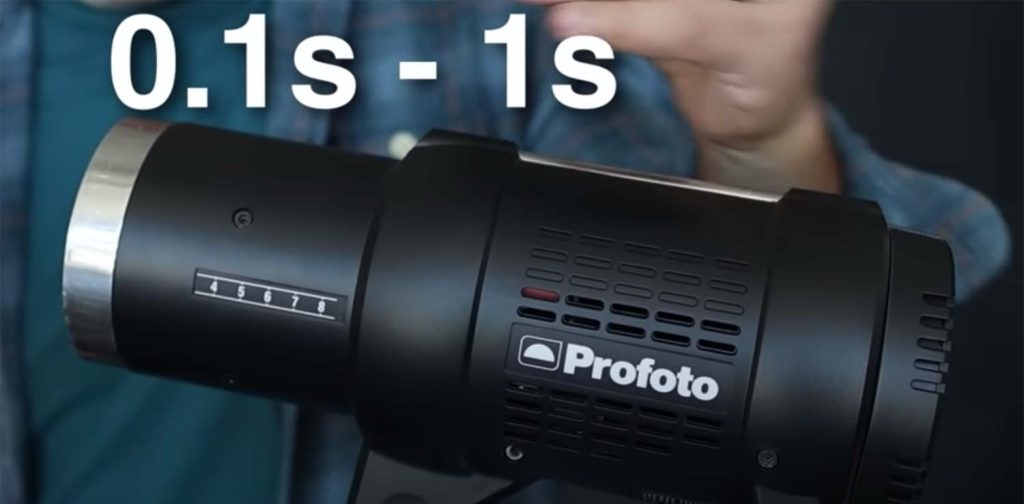
Battery Life
Profoto B1X will give you 325 full-power flash. Of course, this is as advertised. I didn’t sit here and press recycle 325 times, but as advertised, 325 full-power flashes. This is interesting as well. I did something I don’t see other reviews do. At full power, you can do 325 full-power flashes at 500 watts. So one single battery will push out 162,500 watts of total output. Maybe that stat is of interest to you or not. The Westcott FJ400, though, will do 480 compared to the 325 at 400 watts. So this battery is putting out a total of 192,000 watts of power over the course of a battery compared to Profoto, 162,000 watts. Again, Westcott FJ400 for the win.
Build Quality
Not only does the Profoto unit feel more durable in construction quality, I like that the menu system is on the back. And so this is something worth noting here. Profoto has put, on all their units, the controller, the screen, the dials, everything’s on the back of the unit. For the Westcott, the FJ400, it’s on the side.
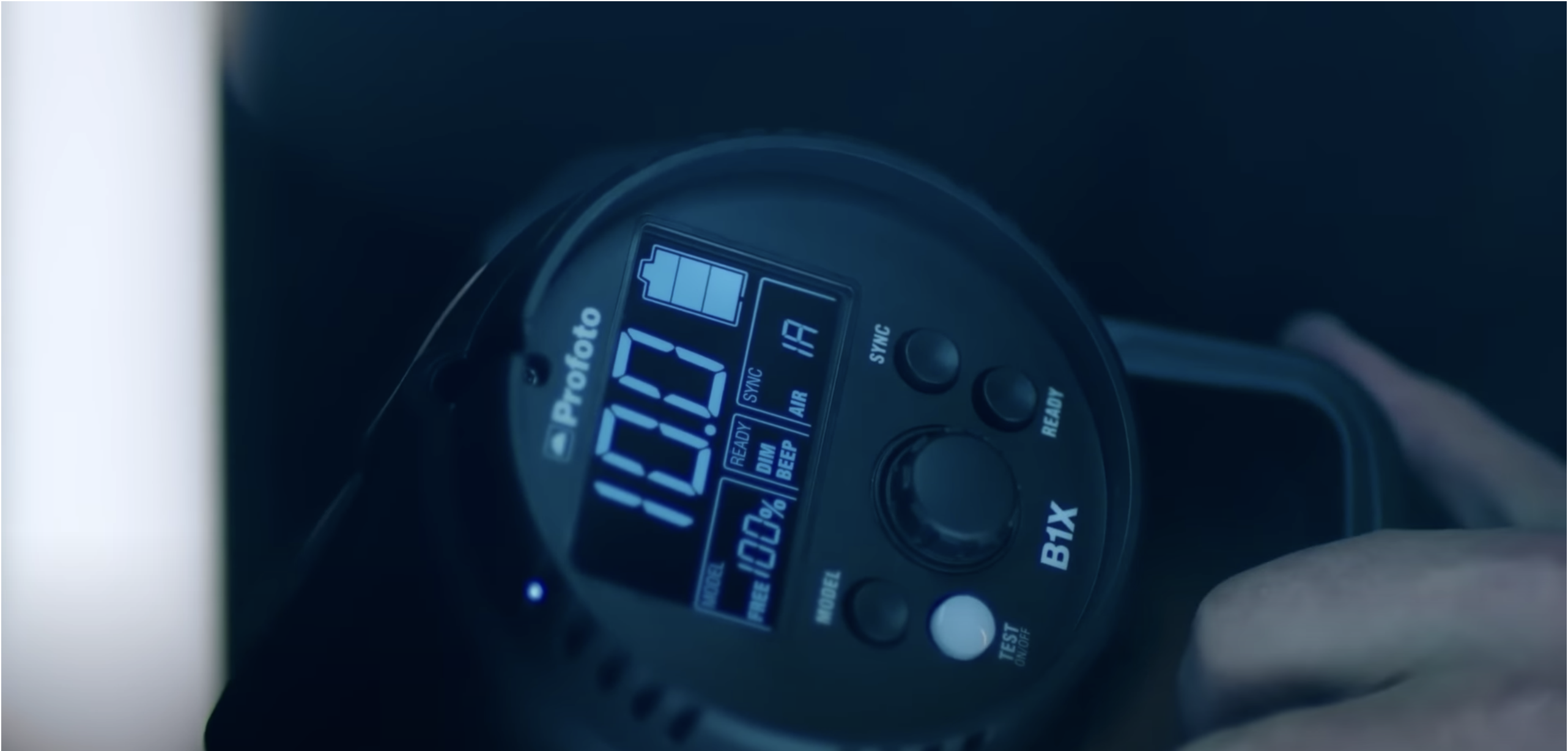
Now this could be one of those arbitrary things that a person is reviewing. In my opinion, I love that Profoto has this on the back of the unit. Why? Have you ever dropped one of your units? I have many times, outside, wind gets it, somebody trips on it. Almost always, because you’ll have something on the front, the strobe either falls face forward or falls to the side. By having this on the Profoto, on the back of the unit and recessed, this screen is somewhat protected in my opinion. And I have dropped these units, they are built like tanks. Whereas the Westcott, I’ve never dropped this, but the build quality, the plastic is a little thinner, not quite as heavy. And with this on the side, my fear is that if this were to fall on the side, we would lose control of that. This would break.
Other Features
Now, some of the other features, in my opinion, are an absolute wash, right? Things like support for TTL, rear curtain sync, high-speed sync. There’s 9-stops of power through the range in 1/10-stop increments. Color temp, consistency, etc, the units are practically identical when it comes to that. They’re negligible.
So, with the Profoto unit, I think they advertise color temp at 5,500K +/- 150K. So what the actual color temperature is not as important as its consistency, meaning if I fire 10 frames with this, is the color consistency through that range going to be consistent? And I can tell you, both units, color temperature is extremely consistent. And you’ll notice that when you get an image into Lightroom and you’re having to adjust all these dials from image to image because there’s no color consistency. And some of your cheaper units that are from overseas, you will notice that the color consistency is just not there. And a little bit of that is what you pay for with it.
One other thing worth mentioning that I think gives Westcott the advantage here is they have created a unit called the FJ-XR. If you’re in the Profoto system, that’s all you’re using, Profoto is not going to work with any other brand of light. Okay, that’s fine. I’ve got an entire system of Profoto, I’ve used it for years and years and years, but what happens as you start growing as a business? When I started out in photography, I used Alien Bees, I’ve used White Lightning, I’ve used Elinchrom. What happens to all those lights? Well, if you move to the Profoto system, you have to abandon all those and just commit to that platform. You’ve seen that and you’ve experienced that, if you’ve moved over.

Westcott has created this unit I’m telling you about, it’s their FJ-XR. And what this allows you to do is use Elinchrom, White Lightning, anything with a flash port on it, basically looks like a stereo jack, where you can plug this unit in and now those lights will work in your FJ ecosystem. And I think that’s pretty powerful as you’re a growing studio looking to expand and not want to have to replace all your light. I think that becomes really important for you.
Now, just to summarize all this, guys, I’ve been using the FJ system for over a year now on various shoots, both paid shoots, portfolio work, on-location, in the studio, and this, hands down, is worth the money, right? Pound-for-pound, dollar-for-dollar, I don’t think you’re going to see a better company on the marketplace.
Now, don’t get me wrong, I know you’re going to have your favorite lights. You’re going to go into the comments and light me up and let me know about all the other light companies that you use and we’ll do future reviews on them. But this is a US-based company, when you call support, you’re getting ahold of somebody, they’re going to warranty their product. That has to matter in the big scheme of things. And by the way, I’m not suggesting that Profoto does not support their product, they absolutely do. But there are companies out there that might have cheaper lights, but are you getting the support? Are you getting the quality, the durability? Are they going to warranty their product? So you’ve got to think about those things when making the investment.




This Post Has One Comment
I appreciated this, as a professional photographer, I’m really spinning my head over just going with the profoto or trying to get something more cost effective.